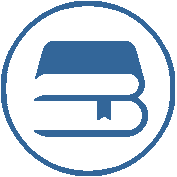Neal-Schuman Publishers
Identifying and analyzing user needs : a complete handbook and ready-to-use assessment workbook with disk
Publisher
Location
Dedication iii
Identifying and Analyzing User Needs:
A Practical Manual on Disk
Table of Contents for Manual on Disk ix
Figures and Worksheets from Manual on Disk xi
Foreword xiii
Preface xv
Acknowledgments xix
Chapter 1: Getting involved 1
What Is a Community Information-Needs Analysis? 2
What a Community Information-Needs Analysis Is Not 3
Assumptions Behind the Process 4
Issues Behind the Need 6
Reasons for Conducting an Information-Needs Analysis 8
Fitting into the Planning Process 10
Summary 12
Chapter 1 Readings 13
Chapter 2: Laying the Groundwork 15
Involving Others 15
Getting Administrative Support 17
Getting Middle Management and General Staff Support 18
Responding to Staff Concerns 20
Setting Up Logistical Procedures 25
Accomplishing Initial Tasks 29
Making Initial Decisions 32
Summary 37
Chapter 2 Readings 38
Chapter 3: Preparing to Conduct a Study 41
Resources 41
Identifying Stakeholders 45
Ethical Considerations 47
Chapter 3 Readings 48
Chapter 4: Framing Questions and Choosing Tools 51
Framing the Research Questions 51
Which Techniques for Which Question 68
Chapter 4 Readings 73
Chapter 5: Designing Data-Gathering Instruments 75
Asking Patrons: General Principles 76
Person-to-Document 102
Summary 119
Chapter 5 Readings 120
Chapter 6: Using In-House Data and Drawing Samples 125
In-House Data 125
Community Data 132
Sampling Techniques and Principles 133
Chapter 6 Readings 149
Chapter 7: Launching a Study 153
Scheduling 153
Training for Each Data-Gathering Technique 155
Maintaining the Data Gathering 163
Chapter 7 Readings 164
Chapter 8: Analyzing the Results 167
Developing an Overview 168
Running the Statistical Analysis 169
Managing public-access computers : a how-to-do-it manual for librarians
Publisher
Location
Acknowledgments vii
Preface ix
Introduction: A Public-service Approach to Public-access
Computers xi
1 What Does a Manager Need to Know About Technology? 1
Kinds of Knowledge: Micro-level and Macro-level 1
Basic Computer Concepts for Managers 4
Further Information 17
2 Facilities 19
Physical Space 19
Electrical Power 20
Furniture 22
Dual-purpose Computer Classroom 34
Facilities Check Questions 36
3 Computer Hardware 41
Microcomputers: Bigger and Faster 41
Other Hardware 49
Acquiring Hardware 56
4 Software 61
System Software 63
Application Software 65
Purchasing Considerations 70
Access to Software: Servers and Hard Drives 75
5 CD-ROM 77
CD-ROM Hardware 79
Providing Access to CD-ROMs 82
Full-text CD-ROM Sets 85
Circulating CD-ROMs 85
Personal CD-ROMs in the Library 86
6 Printing 89
Printer Essentials 89
Types of Printers 90
Networked Versus Non-networked Printers 91
Printer Maintenance and Service 93
Paper 93
Toner and Ink Cartridges 94
Pay to Print 96
7 Working With the Systems Department 103
Improving Communication 105
Reporting Computer Problems 108
8 Security 115
Security Policy 115
Physical Security 117
System Security 122
9 Staffing Issues 139
What Do Public-access Computer Staff Do? 139
Who Staffs Public-access Computers? 140
Part-time Staff 141
Staffing Levels 142
Scheduling Staff 156
10 Communicating With Staff and Staff Training 163
Communicating With Staff 163
Staff Training 173
11 User Relations 191
Communicating With Users 191
Feedback From Users 198
Conflicts With Users 206
Index 215
About the Author 223
Copyright in cyberspace : questions and answers for librarians
Publisher
Location
1 Introduction: Background and Acknowledgments 1
2 Why Is Copyright Important to You? 5
Scope of Copyright
3 What Works Are Protected by Copyright? 7
4 Eligibility for Copyright:
What Is an "Original Work of Authorship"? 9
5 Eligibility for Copyright:
What Is "Fixed in a Tangible Medium of Expression"? 11
6 What Works Are Not Protected by Copyright? 13
7 More Works That Cannot Be Copyrighted:
U.S. Government Works 15
Formalities and Duration
8 Formalities of Copyright: Copyright Notice and Registration 17
9 More about the Formalities of Copyright 19
10 How Long Do Copyrights Last? The Duration Question 21
11 How Long Do Copyrights Last? Unpublished Works 24
Owners and Rights
12 Who Owns the Copyright?
The General Rule and Some Exceptions 26
13 Who Owns the Copyright? Joint Copyright Ownership 29
14 Who Owns the Copyright?
Exceptions, Assignment, and Institutional Policies 31
15 The Expanding Rights of Copyright Owners 34
16 Rights of the Copyright Owner:
Reproduction and Distribution 38
17 Rights of the Copyright Owner: Derivative Works 40
18 Rights of the Copyright Owner:
Public Performance and Display 42
19 Exceptions to the Rights of Owners 44
Fair Use
20 Fair Use: What Exactly Is It? 48
21 Learning about Fair Use: Start with the Statute 50
22 The First Two Factors of Fair Use:
Purpose of the Use and Nature of the Copyrighted Work 53
23 The Factors of Fair Use:
Amount of the Work Used and Effect on the Market 55
24 Fair Use in the Courts:
Quoting from Copyrighted Works 58
25 Fair Use in the Courts: Photocopying for Education 61
26 Fair Use in the Courts:
More about Photocopying and Reproduction for Education 63
27 Fair Use and Unpublished Works 66
28 Experimenting with Fair Use:
Moving from Print to the Internet 69
29 Making Sense of Fair Use:
What About Fair-Use "Guidelines"? 72
30 Making Sense of Fair Use:
Fair-Use Guidelines and One University's Response 74
Special Exceptions
31 Displays and Performances in Distance Learning 77
32 Library Copying: A Statutory Provision of Its Own 81
33 Library Copying: Copies to Keep and Copies to Preserve 84
34 Library Copying: Copy Machines in the Library 89
Looking Ahead
35 Copyright and New Technologies: Computer Software 91
36 Copyright and New Technologies:
The World Wide Web 93
37 Requesting Permission from the Copyright Owner 95
38 Liability for Copyright Infringement 97
39 What Is at Stake in an Infringement Action? 100
40 Acting in Good Faith 103
Appendices
